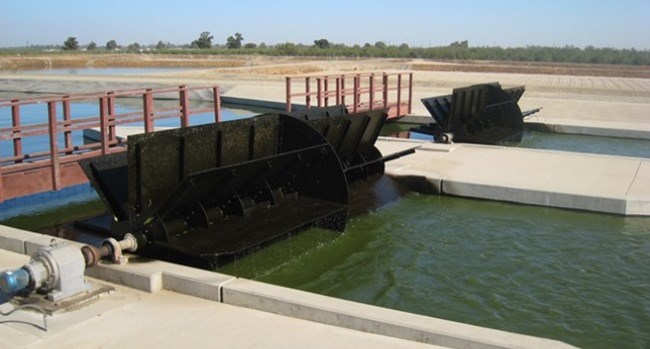The Surprising Answer To Nutrient Removal

By Laura Martin

Algae have caused a lot of trouble in the water industry in recent years. Toxic algae were linked to neurodegenerative diseases and forced a water treatment plant in Ohio to shut its doors. Cleanup and control of algae has cost utilities millions of dollars and will cost them even more now that federal funding for treatment and prevention isn’t as available.
But algae are also used to treat wastewater and generate biofuel, and new research may just redeem the water industry foe.
Tryg Lundquist, an environmental engineer at California State Polytechnic University-San Luis Obispo, is working on a system that uses algae to naturally treat wastewater.
Overcoming algae’s negative reputation hasn’t been easy for Lundquist.
“The field of algae for wastewater treatment has always been tricky,” said Lundquist. “People are typically trying to get rid of algae, and here we are trying to use it to treat the water.”
The treatment uses photosynthetic algae in a wastewater raceway pond — a shallow artificial pool mixed by a slow-moving paddle wheel. When the sun hits the algae, they release oxygen while absorbing CO2 and absorbing nutrients like nitrogen and phosphorus from the wastewater. The mixed pond acts like a flocculation basin so the algae can be settled, with clean water exiting the system. The method is similar to an activated sludge wastewater treatment system, but uses oxygen from algae instead of from electric blowers.
This method requires little to no chemical addition and is inexpensive, energy effective, and sustainable. The technology, when applied in ideal conditions, has the potential to save communities about half the cost of activated sludge, predicts Lundquist.
A traditional wastewater treatment pond system works a lot slower, and some ponds need chemicals to flocculate the algae,” Lundquist explained. “We do have a backup chemical system available as a matter of good engineering, but the goal is to never have to use chemical dosing.”
Similar algae systems have been commercialized since the 1960s for secondary wastewater treatment, but none have been implemented yet for nutrient removal, said Lundquist. Pilot testing for a system that can do both is currently underway.
Lundquist and his team are also working to optimize an additional function for algae raceway systems — the creation of biofuel. Algae-generated biofuel could power the wastewater treatment plant itself or be sold to make additional income for the utility.
"We are growing micro-algae in the process of treating wastewater, and we have all this algae left over,” Lundquist stated. “There is a big push for the production of biofuel from that algae right now.”
Phosphorus fertilizer, which is critical for the agriculture industry, could also be a byproduct of Lundquist’s algae system.
While there are many benefits to the algae raceway treatment system, it isn’t well-suited for every location.
"For this to work, you have to have flat land and be in an area where you have nice weather all year, because it is a solar process,” said Lundquist. “The more solar energy you have in your geographic location, the less it is going to cost in supplemental energy.”
The system can fit on any size piece of land, but it works best if 7 to 10 acres are available per million gallons a day of wastewater flow being treated.
Lundquist said cities looking for a cost-effective wastewater treatment alternative should consider an algae system.
“For those who want to remove nitrogen and phosphorus while cutting down cost and improving the sustainability of their infrastructure, this is a good option.”
